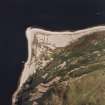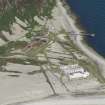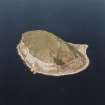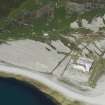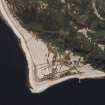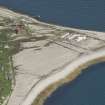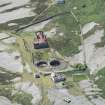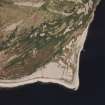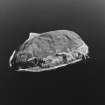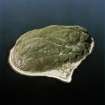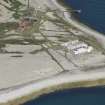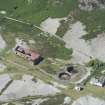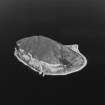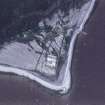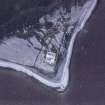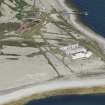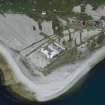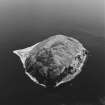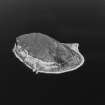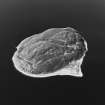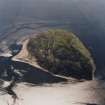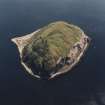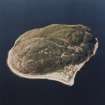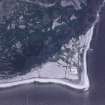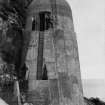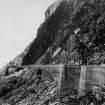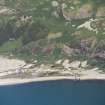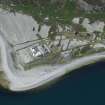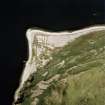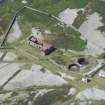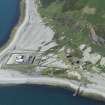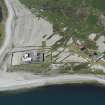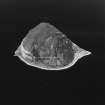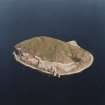Following the launch of trove.scot in February 2025 we are now planning the retiral of some of our webservices. Canmore will be switched off on 24th June 2025. Information about the closure can be found on the HES website: Retiral of HES web services | Historic Environment Scotland
Ailsa Craig, Foreland Point, Lighthouse, Keepers' Cottages And Foghorn
Fog Horn (19th Century), Lighthouse (19th Century), Lighthouse Keepers House(S) (19th Century)
Site Name Ailsa Craig, Foreland Point, Lighthouse, Keepers' Cottages And Foghorn
Classification Fog Horn (19th Century), Lighthouse (19th Century), Lighthouse Keepers House(S) (19th Century)
Alternative Name(s) South Port; Ailsa Craig Light; Trumpet House; Firth Of Clyde
Canmore ID 157548
Site Number NX09NW 5
NGR NX 02521 99706
Datum OSGB36 - NGR
Permalink http://canmore.org.uk/site/157548
- Council South Ayrshire
- Parish Dailly
- Former Region Strathclyde
- Former District Kyle And Carrick
- Former County Ayrshire
This island lighthouse is situated on the SE side of the prominent high island (also known as 'Paddy's Milestone') from which it takes its name. It guards the W side of the main entrance into the Firth of Clyde, and is notable for the addition of a complex system of fog signals.
Built by Thomas and D A Stevenson, the light was established in 1886 and automated in 1990. Two fog signals (in 'horn houses') were established at opposite ends of the island in 1883-6, being powered by gas supplied from a central gasworks (NX09NW 5.01) just Nw of the tower. These were replaced by a Tyfon system (situated close to the tower) in 1966.
Information from RCAHMS (RJCM), 26 April 2006.
NX09NW 5.00 02521 99706
NX09NW 5.01 Centred NX 02414 99776 Gas Works
NX09NW 5.02 NX 02453 99885 Pier (Highlandman's Walk)
See also:
NS00SW 2 NS 01913 00402 Fog Horn (Northern Horn House)
Name: Ailsa Craig (1882-6)
Location: N55 15 W5 06 Firth of Clyde, 10 miles W of Girvan
Designed and built: Thomas and David A Stevenson
Light first exhibited: 15 June 1886
Description: circular stone tower, painted white
Height of light above MHW: 59ft (18m)
Height of tower: 36ft (11m)
Light source and characteristics: W Fl (1) ev 4 secs 20. Acetylene: 40,000cp: nominal range 17nm
Fog warning apparatus: Discontinued
Manning: unwatched (automatic since 30 March 1990), monitored from Northern Lighthouse Board HQ, Edinburgh
Solar panels installed as part of automation process. Listed
C Nicholson 1995.
This island lighthouse is situated on the SE side of the prominent high island (also known as 'Paddy's Milestone') from which it takes its name. It guards the W side of the main entrance into the Firth of Clyde, and is notable for the addition of a complex system of fog signals.
Built by Thomas and D A Stevenson, the light was established in 1886 and automated in 1990. Two fog signals (in 'horn houses') were established at opposite ends of the island in 1883-6, being powered by gas supplied from a central gasworks (NX09NW 5.01) just NW of the tower. These were replaced by a Tyfon system (situated close to the tower) in 1966.
Information from RCAHMS (RJCM), 26 April 2006.
R W Munro 1979; K Allardyce and E M Hood 1986; S Krauskopf 2001.
Light House [NAT]
OS (GIS) MasterMap, May 2010.
Construction (1882 - 1886)
Oil burning light system.
R Paxton and J Shipway 2007
Project (2007)
This project was undertaken to input site information listed in 'Civil engineering heritage: Scotland - Lowlands and Borders' by R Paxton and J Shipway, 2007.
Publication Account (2007)
In 1881 petitions were received by the Northern Lighthouse Commissioners requesting two fog signals and a lighthouse on Ailsa Craig, a conical rock isle rising steeply from the Irish Sea to a height of 1110 ft ten miles west of Girvan. The commissioners agreed and work started in 1882, on what was a complex station because of its remoteness, culminating in an oil-burning light being first exhibited on 15 June 1886.
The lighthouse is a stone tower about 36 ft tall and about 59 ft above sea level just above the east shore of the isle and the substantial fog sirens were erected at the north and south sides of the isle. Their compressors werepowered by 38 hp Crossley ‘Otto’ silent gas engines at the station and the compressed air was conveyed to the 20 ft high concrete trumpet houses in 212 in. diameter iron pipes.
The station was designed and installed under the direction of Board engineers T. and D. A. Stevenson. The contractor for the lighthouse and other buildings was Hill & Son, Leith; for the pumps, piping and sirens, the Calorific Fog-Signal Company, and the gas-making plant, J. Keith, Arbroath. The total cost was about £24 000.
The fog signals, which operated at a pressure of up to 75 psi, were permanently discontinued in November 1966 and replaced by a Tyfon fog signal. Until wireless communication was established in 1935 carrier pigeons from Girvan Green were used for emergency messages and when this was not practicable, a system of fires.
R Paxton and J Shipway 2007
Reproduced from 'Civil Engineering heritage: Scotland - Lowlands and Borders' with kind permission of Thomas Telford Publishers.










































